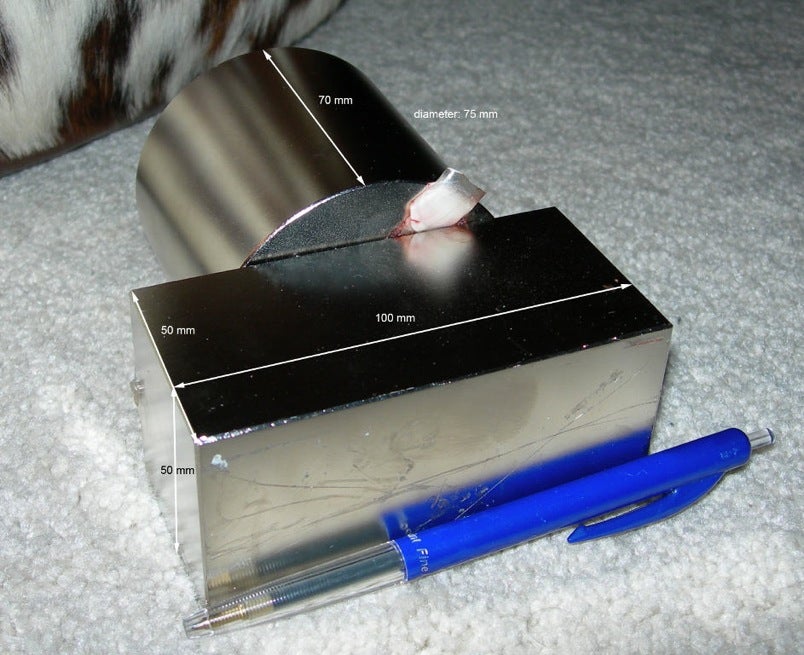kleinbl00 the DreamCrusher checking in. So the main problem is that cars weigh a fuckton. I'm going to guess you've never pushed one out of an intersection, or had one nearly fall on you while you were removing something from underneath. Let's pick a nice round number like 2,000 kg (4400lbs). It's barely over the national average so we'll call it a slim margin of safety. Let's figure out what sort of force we're trying to avoid. We'll take it easy and stick with something we don't need - 5 mph bumpers have been mandatory since 1974. that's 2.2 m/s... which is a speed, not a force. Not to worry: f=ma. Oh, shit! acceleration, not speed! Let's accelerate (decelerate, actually) from 2.2m/s to 0 m/s in, what say, half a second? Drifting like a cloud over here. Awright. vf=vi (plus) a x t; 0 = vi (plus) at; at = -vi; a/2 = 2.2; a = 4.4 m/s. f = ma = (2000kg )(4.4 m/s^2) = 8800 newtons necessary to stop an average car from 5mph. What a cute little number! Surely such magnets exist! Here's the problem. It's not a cute little number. It's a shade under 2000lbs force. Go play a little with this calculator and see if you can get there. I hypothesize you'll be terrified long before you succeed; if not, you haven't seen this image: Run the numbers on that guy. That's a repelling force of 200 lbf. With a finger in it. _________________________ All this, of course, is assuming things line up perfectly. If they don't, you end up with some fraction of 2000lbf pulling towards each other. Kind of makes parking lots seem a bit like deathtraps, eh what? And then, of course, there's the fun involved in having thermonuclear magnets just sort of sitting around. Bend down to clean your license plate and your car keys are going to pin you to the bumper, for example. Of course, we'd use electromagnets, right? Well, we've got our numbers, let's calculate using the ever-helpful eHow. Or, since we've got our engineering degree and don't need to prove shit anymore, we'll just up and buy one. We need 2000lb of force. That looks to me like about 90lbs of electromagnet (180, really, if we're putting them in front and rear) which are going to run on about 200w of power. Which, by the way, is the ragged edge of what a superhot aftermarket alternator can put out. We'll run it off the car battery, obviously, but the point is this: You're talking about adding 200lbs of weight and 200W of circuitry designed to accomplish the same thing that bumpers have been required to accomplish since 1974. The problem magnifies the more ambitious you get in a nastily quadratic sort of way. So it's a good idea in realms where things don't weigh very much, like toy trains on carpet. Out in the world of metric tons of steel sliding into each other? It's a complication at best, to put it mildly. Next time you have a dead hard drive, tear that fucker open. Savage the magnets out of it. Try not to give yourself a blood blister. My dad keeps a collection of dead hard drive magnets on his fridge and it's a pain in the ass putting up a note without drawing blood... and those things are designed for data, not fender-benders.